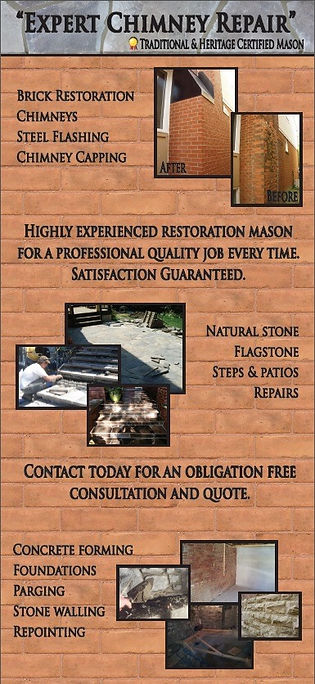
Natural Stone, Brick, Block, Concrete Services
And Authorized Sales and Installation of SuperForm ICF Products
Salt and its Unfriendliness to Masonry
Salt, best known to masonry as efflorescence is damage caused by the expansion of soluble salts. Salts or other snow removal chemicals used near the building may have dissolved and been absorbed into the masonry, causing potentially serious problems of spalling or efflorescence. Removal can often be obtained through pressure washing, acid washes, or a variety of products readily available at your local masonry dealer.
Lime or Portland Cement
The two commonly used binders for mortar are lime and Portland cement. Of the two, lime produces a mortar that meets nearly all the requirements for a compatible mortar for historic buildings. High lime mortar is soft, porous, and changes little in volume during temperature fluctuations. In addition, lime mortar is slightly water soluble and thus is able to re-seal any hairline cracks that may develop during the life of the mortar.
Portland cement, on the other hand, can be extremely hard, is resistant to movement of water, shrinks upon setting, and undergoes relatively large thermal movements.
Cracking
It may seem obvious that a crack in a masonry wall indicates a problem that requires immediate correction. Yet cracking may reflect previous settlement or shifting that is now stable and requires no action other than grouting or repointing to keep moisture out.
Causes of Brick Masonry Deterioration
-
Expansion and contraction due to freeze/thaw cycles
-
Efflorescence (expansion of soluble salts)
-
Thermal expansion and contraction
-
Expansion of rusting metal contiguous to the masonry units.
-
Moisture trapped behind painted masonry unable to escape.
-
Spalling and dusting
-
Cracking caused by settlement
-
Masonry "sealed" with an inappropriate sealer.
-
Effects of acid rain.
-
Failure to properly repair mortar joints (repointing) soon after initial mortar failure.
-
Using an incorrectly formulated repair mortar for repointing.
-
Failure to repoint.
-
Incompatible materials with differing physical characteristics from each other.
-
Imperfections in the masonry units resulting from the manufacturing process.
-
Incorrectly installed masonry units.
-
Poor detailing, design, and specifications.
-
Wind erosion.
-
Biological growth.
-
Rising damp (the rising of water through masonry by way of capillary action).
-
Splash back (water falling from the roof line and back-splashing).
-
Being hit by vehicles, lawn mowers, etc.


